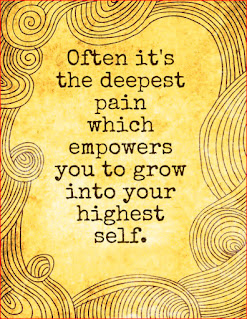Themes of Pain, Suffering and Growth are One of the Prominent Elements of Dickinson’s Poetry
Dickinson’s poetic world is permeated
with pain and suffering and the struggle to evade, face, overcome and wrest
meaning from it, or growing from it. Suffering is central to her poetic faith,
and it is involved in the creative processes as well. It is part of her
ambivalent response to the mysteries of time and nature. Suffering plays a
major role in her poems on suffering. Her poems on the subjects of suffering
and growth can be divided into three groups: (1) poems that focus on
deprivation as a cause of suffering, (2) those dealing with suffering bring
compensatory rewards or spiritual growth.
Love-deprivation lies behind many of her
poems. “Renunciation is a Piercing Virtue” deals with theme of her abandoning the
hope of a beloved person. However, she is less visible here than in some of her
poems where a lover is visible, and she is not clear about the final meaning of
her painful experience.
Some of her poems deal with childhood
deprivation. In them she is explicit
about the sources of her suffering, but they are less powerful than her general
treatment of suffering. “Pain-has an Element of Blank” is one of her poems in
which her anguish goes on indefinitely. It is a timeless suffering, mental,
rather than physical. “After Great Pain a Feeling Comes” is Dickinson’s most
popular poem about suffering, and one of her greatest poems. The pain is
psychological here, and there is no real damage to the body and no pursuit of
healing. “I felt a Funeral, in my Brain” is about death, but it seems to be a
dramatization and a final sinking into a proactive numbness like that portrayed
in “After Great Pain”.
Some of Dickinson’s poems about poetry
and art reflect her belief that suffering is necessary for creativity.
Poems on love and on Nature suggest that
suffering will lead to a fulfillment of love or that the fatality which she
feels present in Nature elevates her and sharpen her sensibility.
“My Cocoonn Tightens, Colours Tease” is
both a lighter and a sadder treatment of the pursuit of truth. Its metaphor of
self as a butterfly makes u think that it is about the struggle for personal
growth.
“Dare you see a soul at the White Heat?”
is a poem of celebration of growth through suffering. The blacksmith’s forge is
described as a symbol of every soul which passes through the fires of rebirth.
Pain and suffering are, to Dickinson,
the very expression of eternity. The infinity of human suffering is brought out
in mystical terms in the poem “Pain- Has an Element of Blank”. Pain is a
consummate experience which paves the way for Heaven. In “The Hallowing of
Pain” the poet says that Heaven is not achieved by one who labours in the
midway, that is, half-heartedly, but he reaches heaven who tries with utmost
pain to reach there. The road to Heaven is covered with hurdles of pain.
Dickinson believes that the happiest
experience of life become more vivid and picturesque, and therefore more
memorable when they are seen from the vantage point of suffering and anguish.
Dickinson was a great poet of pain and
suffering and growth, and spiritual regeneration through them. Her poetic
feelings of such emotions are intense, trough they are sometimes hidden beneath
the grab of rhetorical figures.


Thanks
ReplyDelete